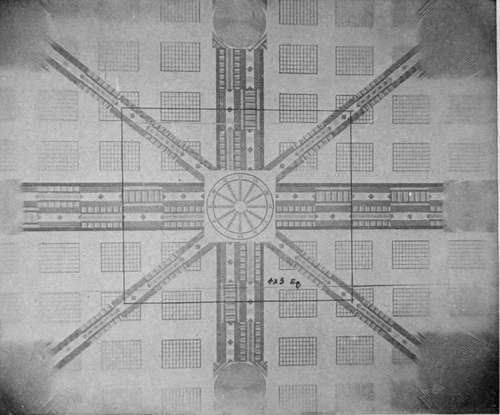Astigmatism And Covering Power
Description
This section is from the book "Airplane Photography", by Herbert E. Ives. Also available from Amazon: Airplane photography.
Astigmatism And Covering Power
Suppose the lens forms at some point off its axis an image of a cross. Suppose one of the elements of the cross to be on a radius from the center of the field, the other element parallel to a tangent. 4
The rays forming the images of these two elements of the cross are subject to somewhat different treatment in their passage through the lens. The curvature of the lens surfaces is on the whole greater with respect to the rays from the radial element than to those from the tangential element. They are therefore refracted more strongly and come to a focus nearer the lens. The arms of the cross are consequently not all in focus at once. This error, termed astigmatism, is rather well shown in Fig. 15, where the images of the outlying concentric circles are sharp in the radial, but blurred in the tangential direction.

Fig. 15. - Photograph of a lens testing chart, showing failure in defining power outside area for which the lens is calculated.
Astigmatism can be largely compensated for, and its character controlled. The most usual correction brings the two images in focus together both at the axis, and on a circle at some distance out. This second locus of coincidence may or may not be in the same plane as the first, depending on which disposition produces the best average correction. The mean between the two foci determines the focal plane of the lens, which is in general somewhat curved. The covering power of a lens is given by the size of the field which is sufficiently flat and free from astigmatism for' the purpose for which the lens is used. This is largely determined by the astigmatism, but the other aberrations are also important.
Continue to:
Tags
camera, lens, airplane, aerial, film, exposure, photography, maps, birdseye
